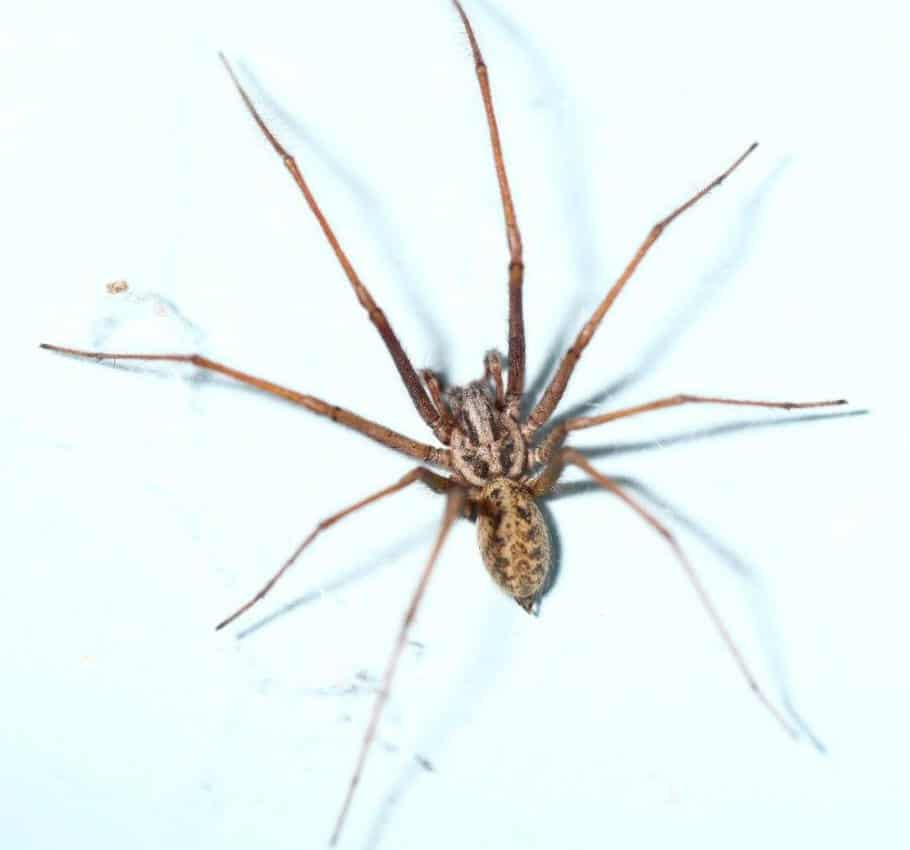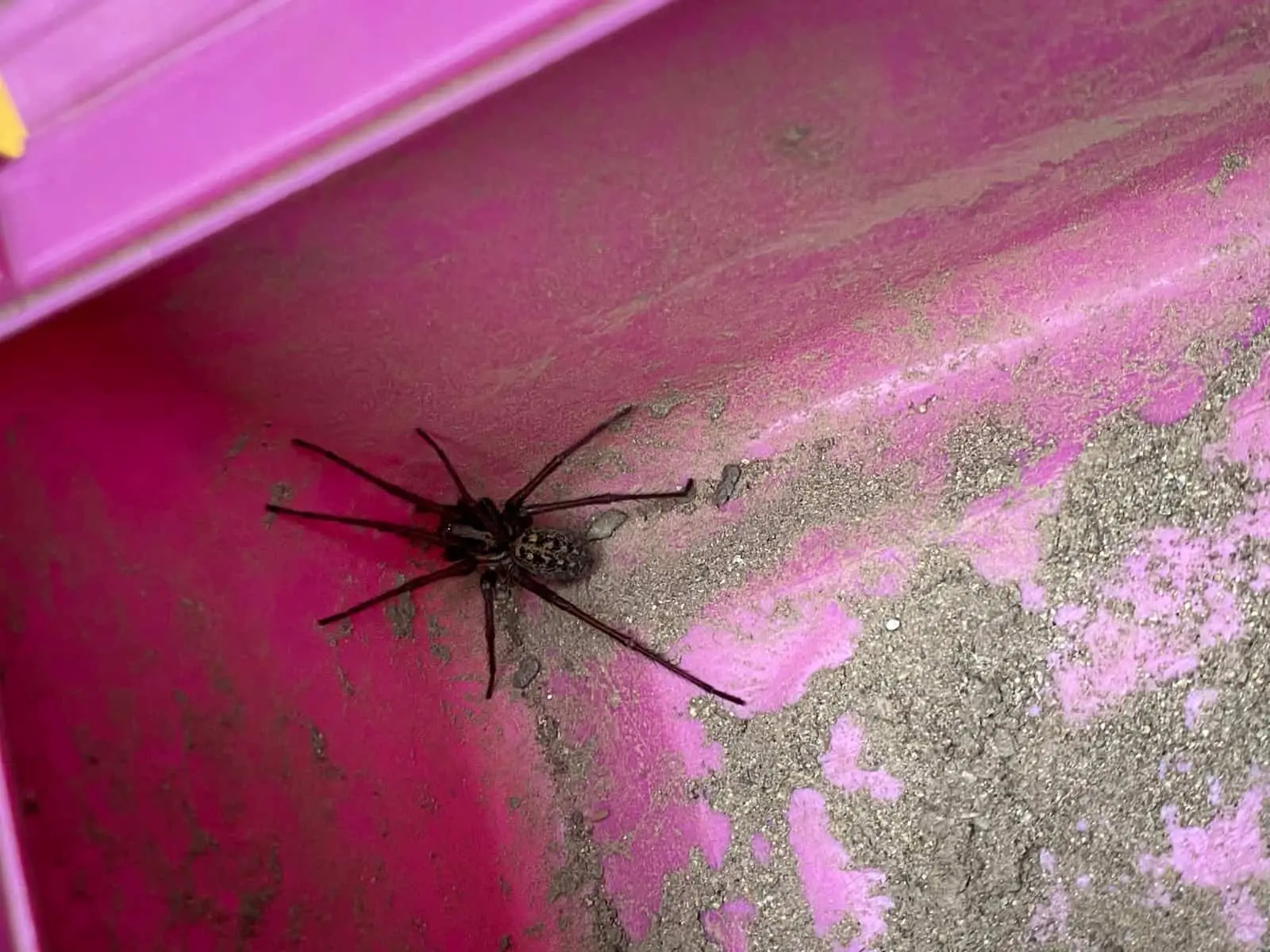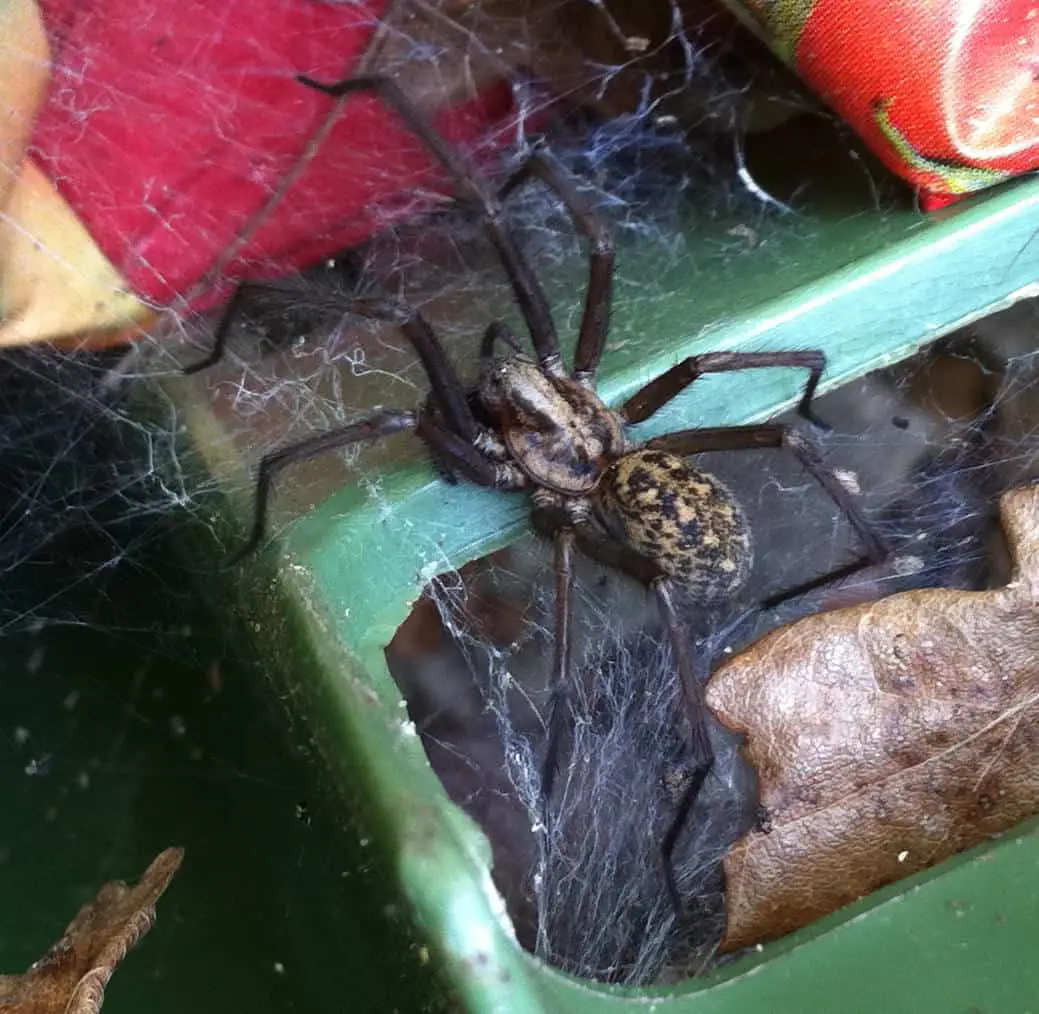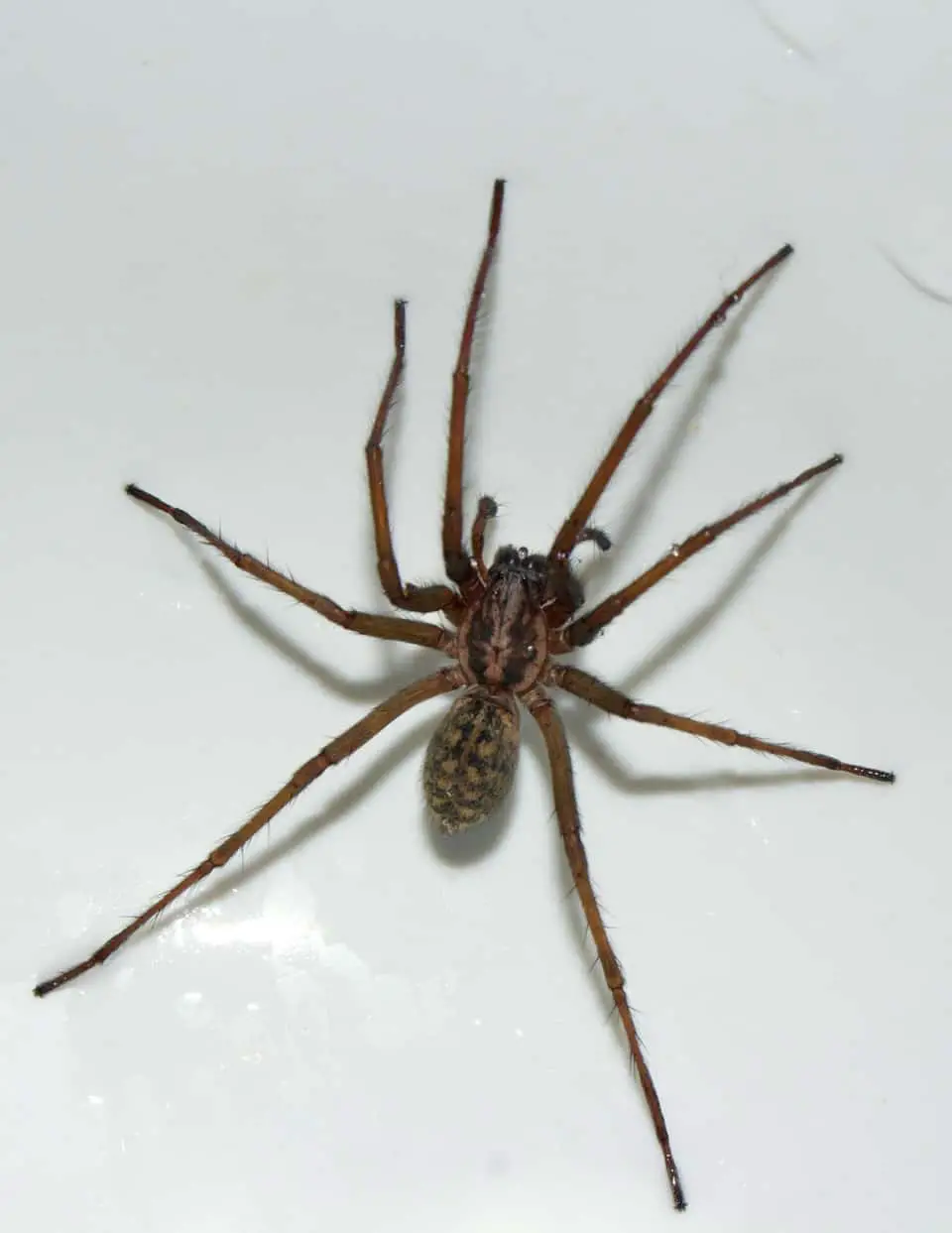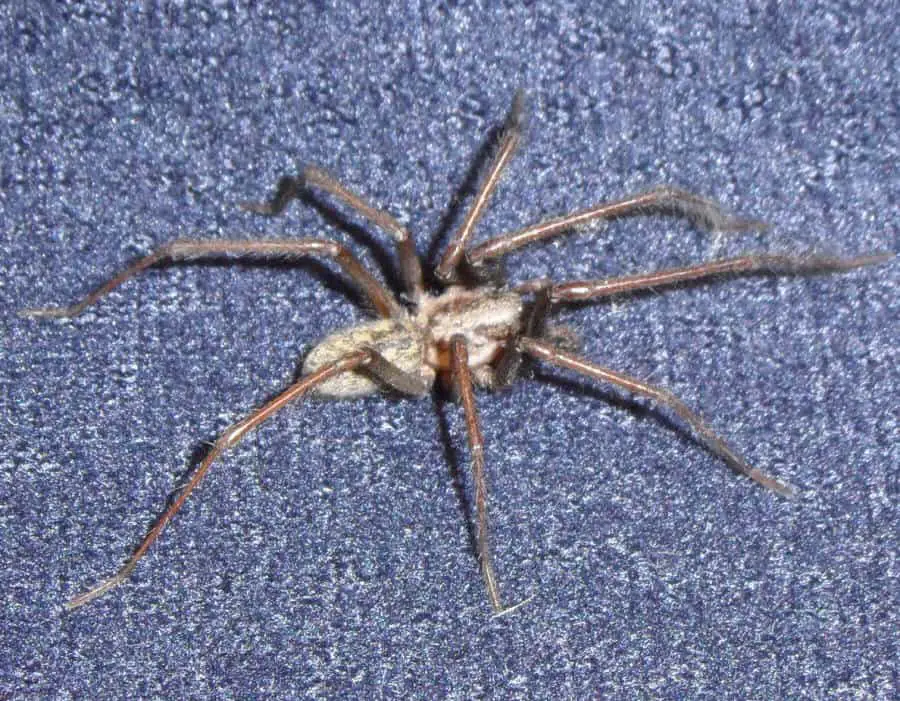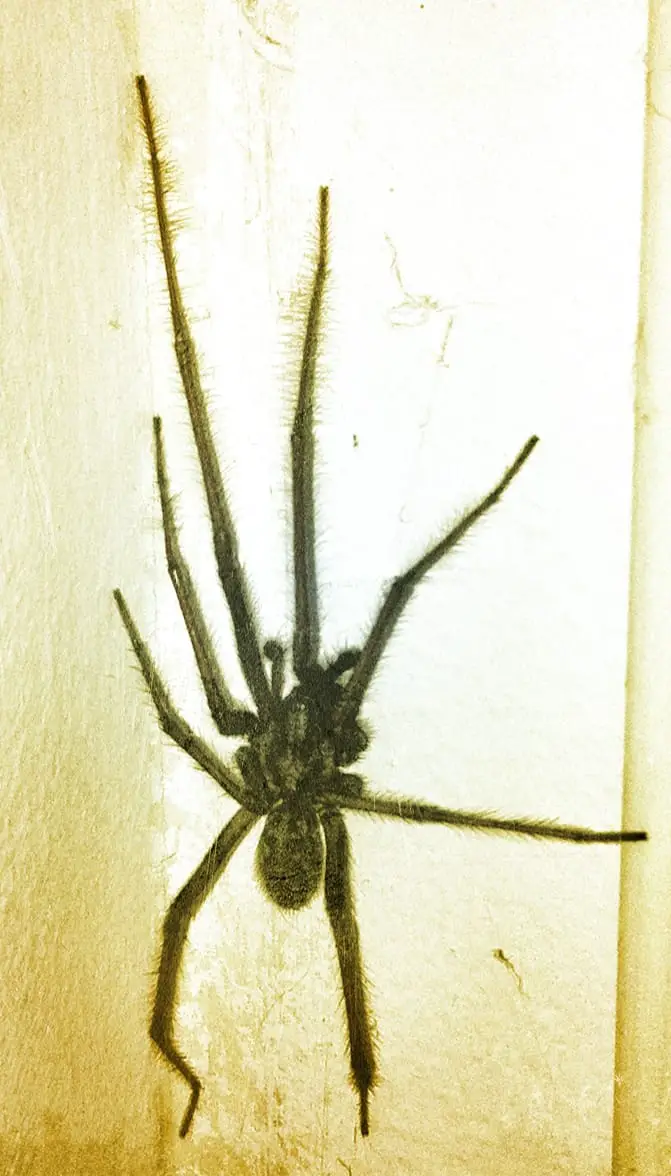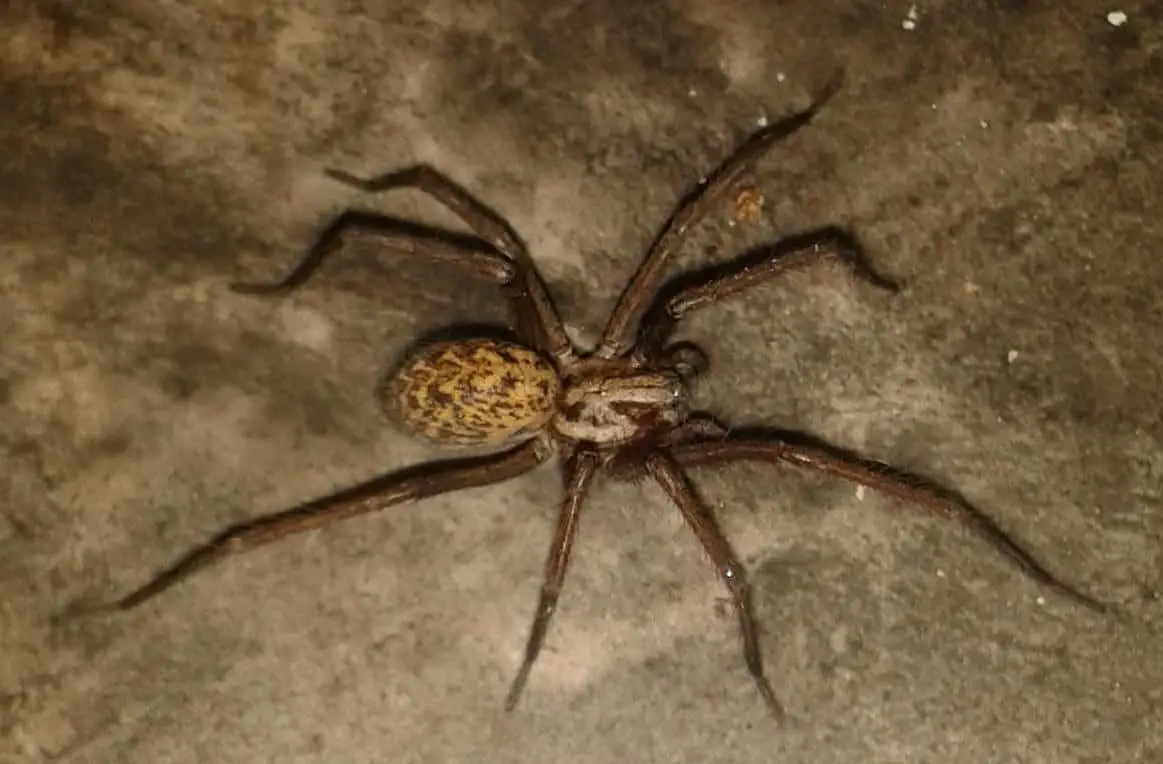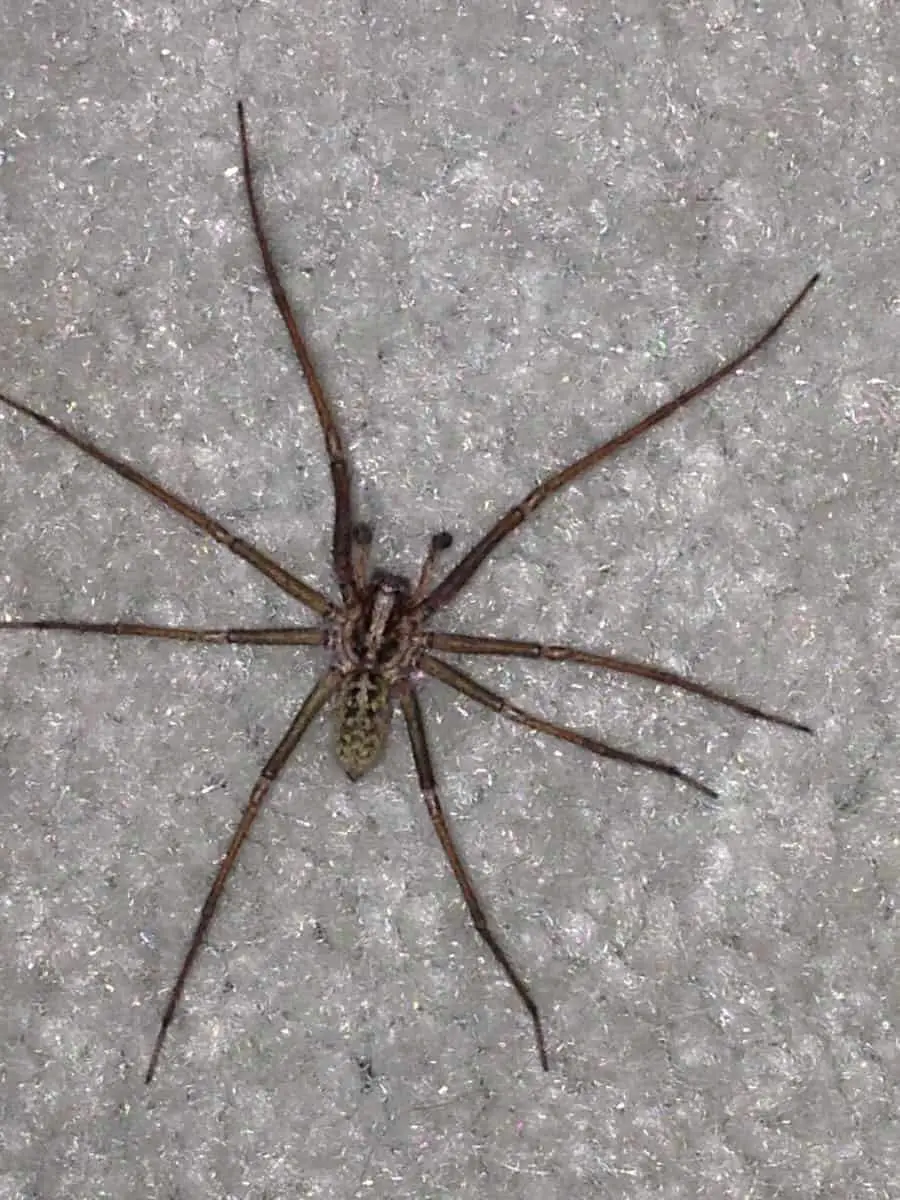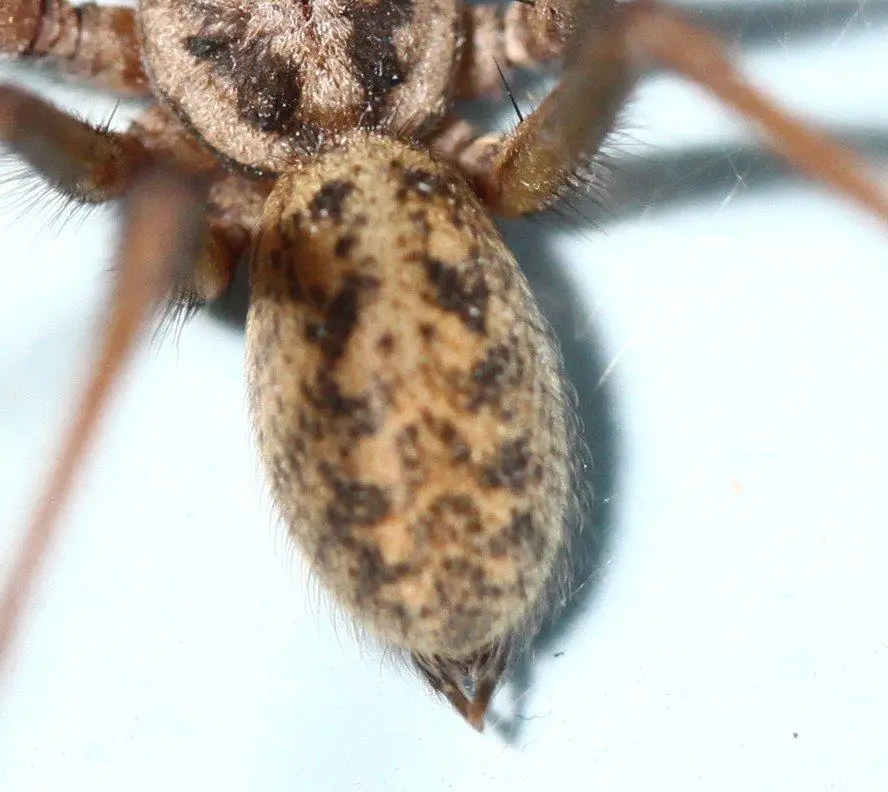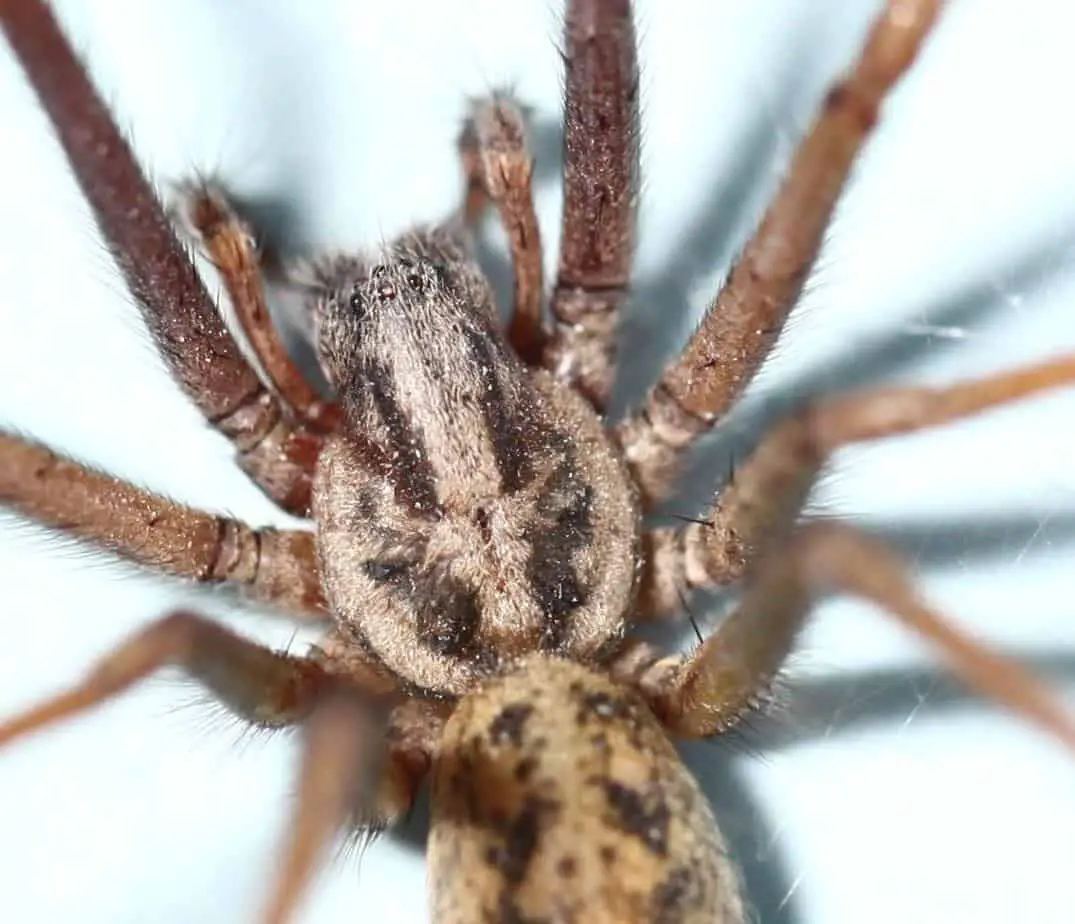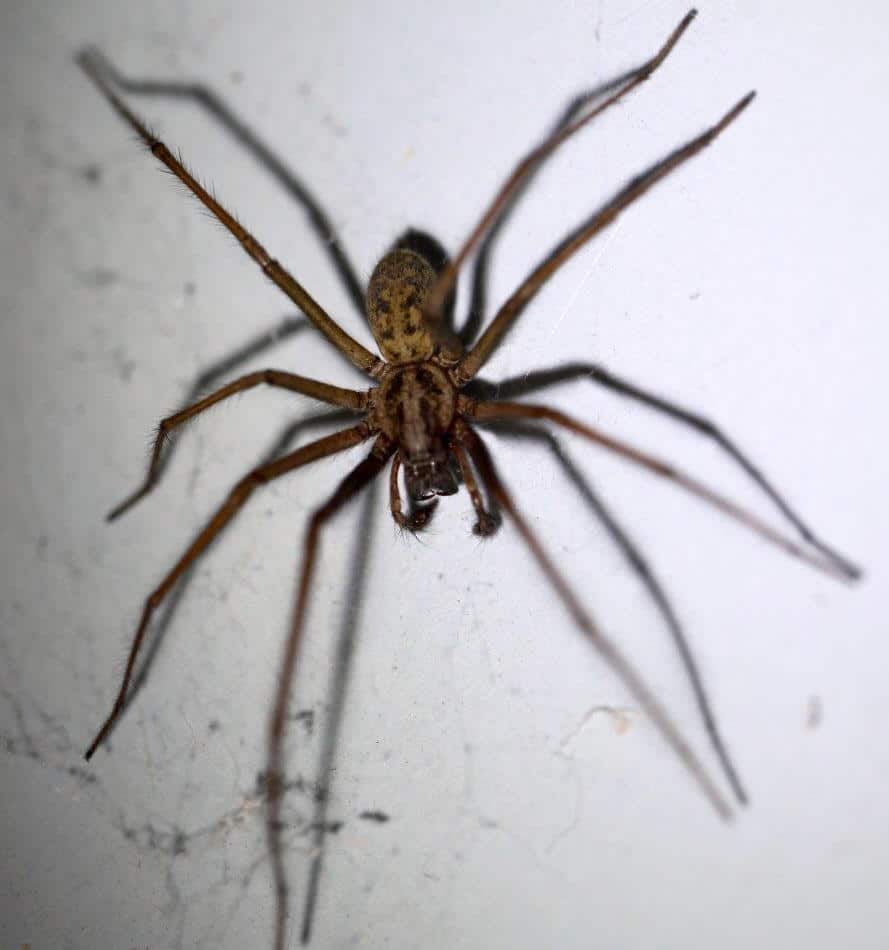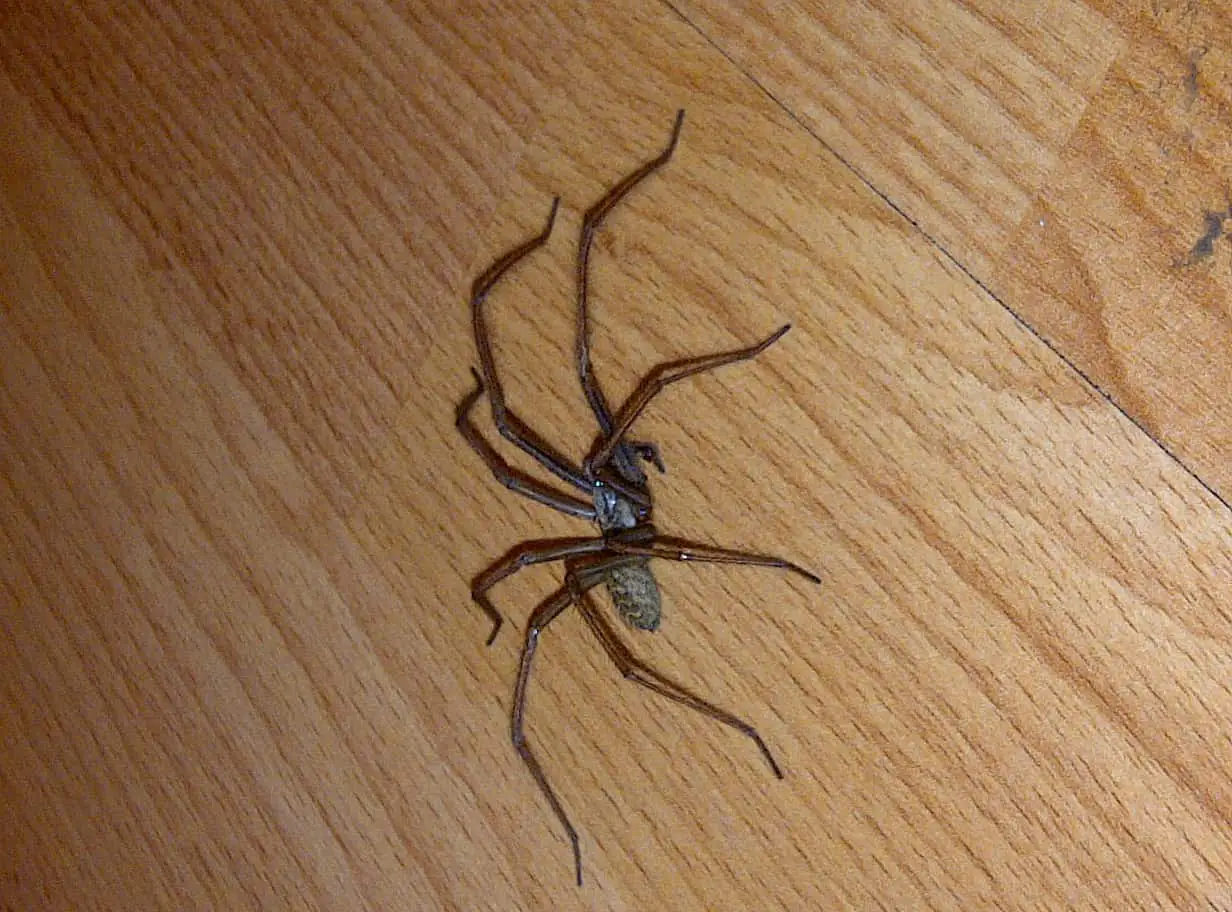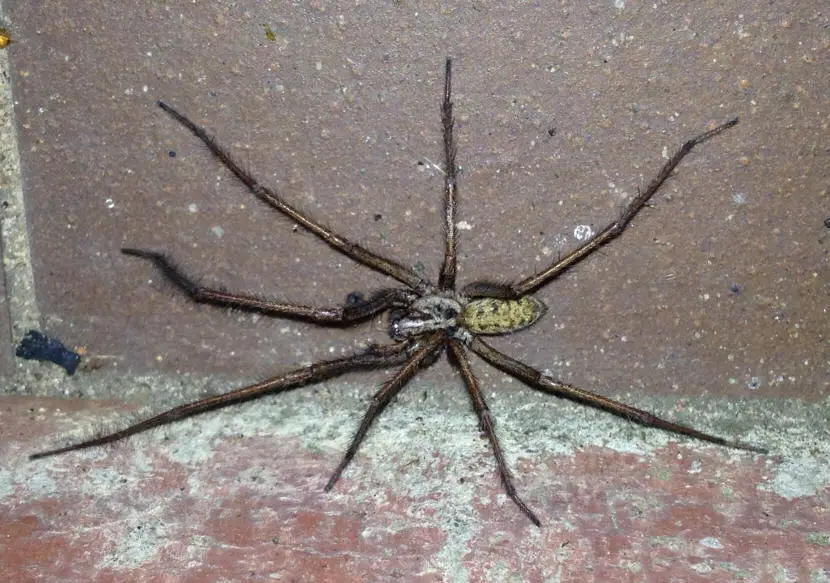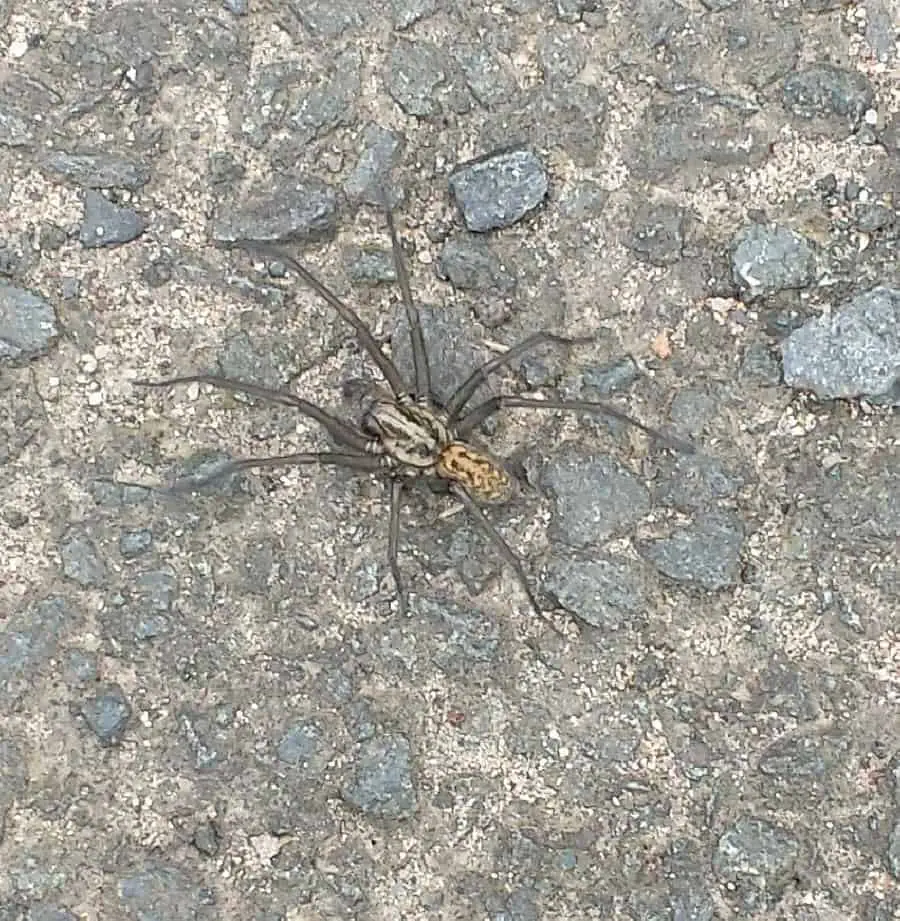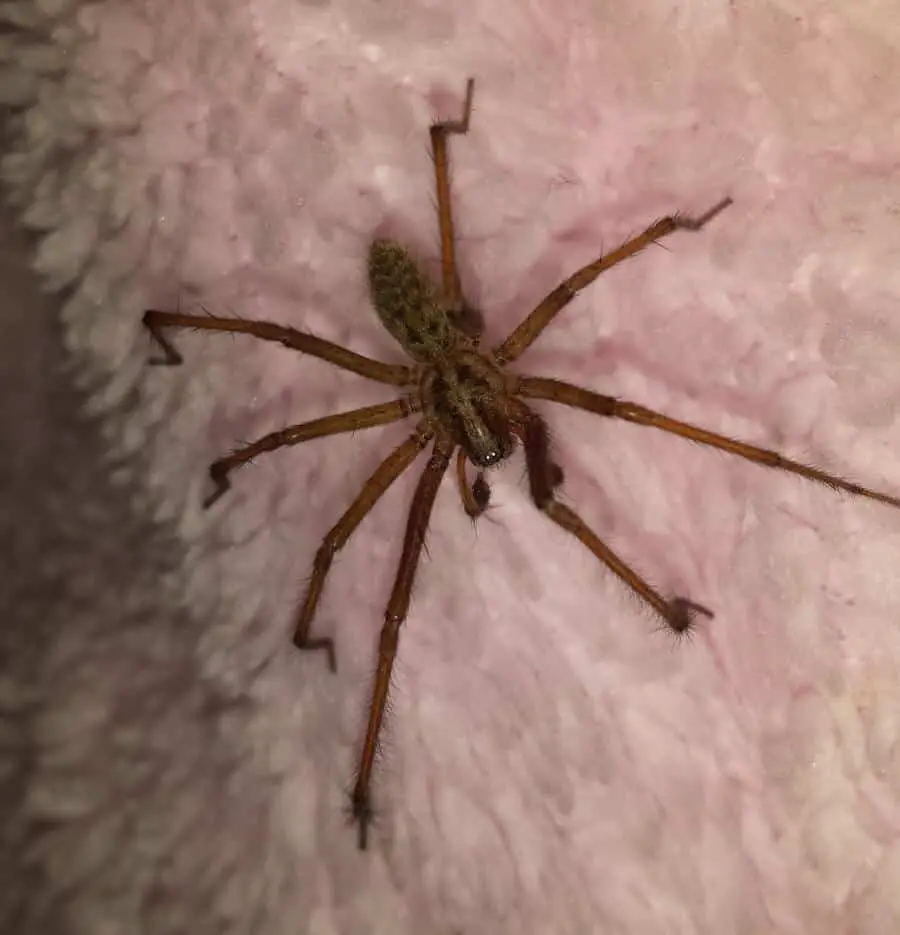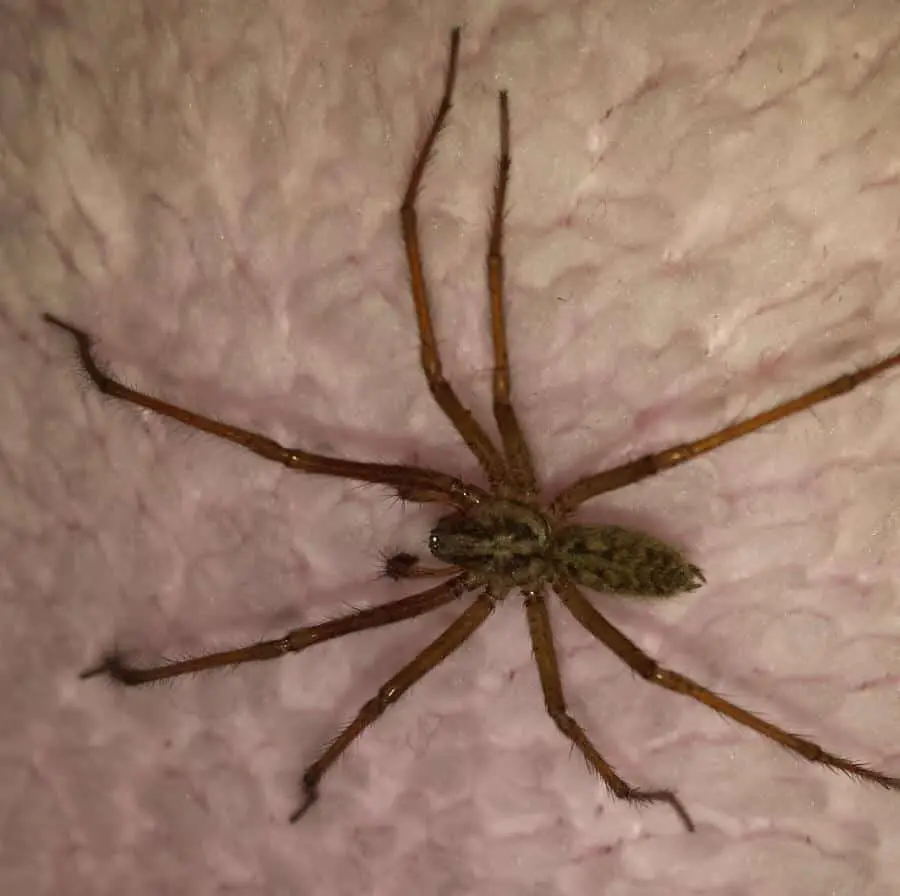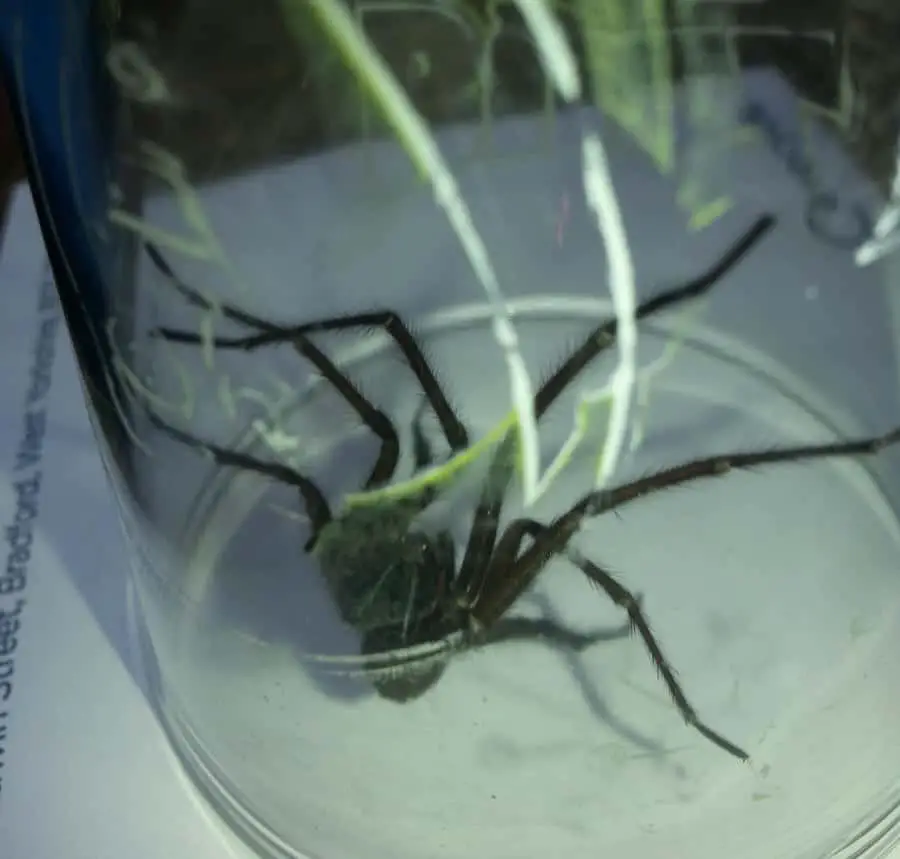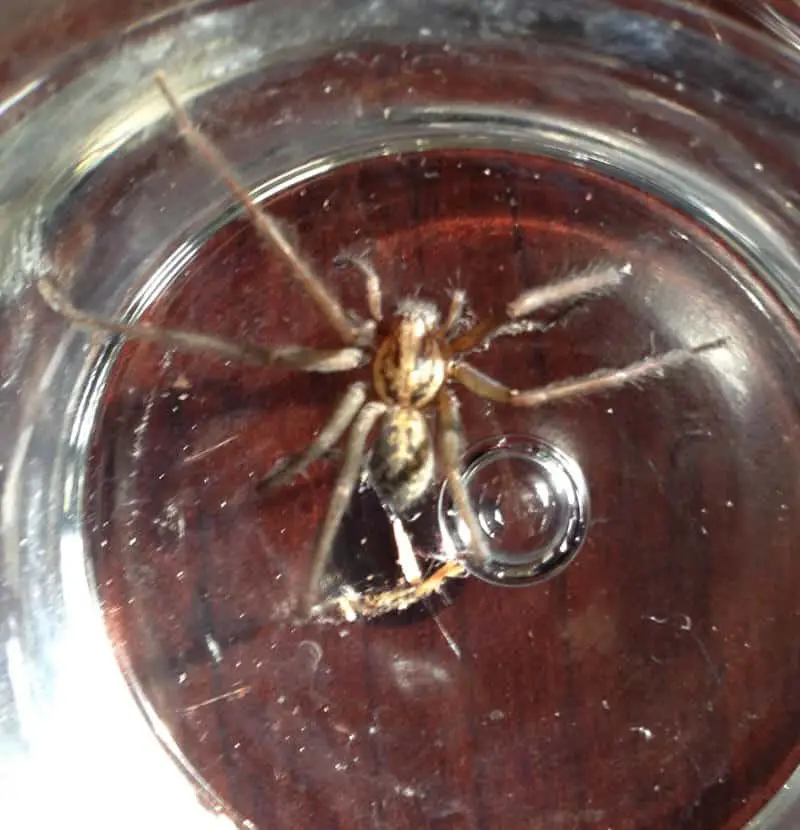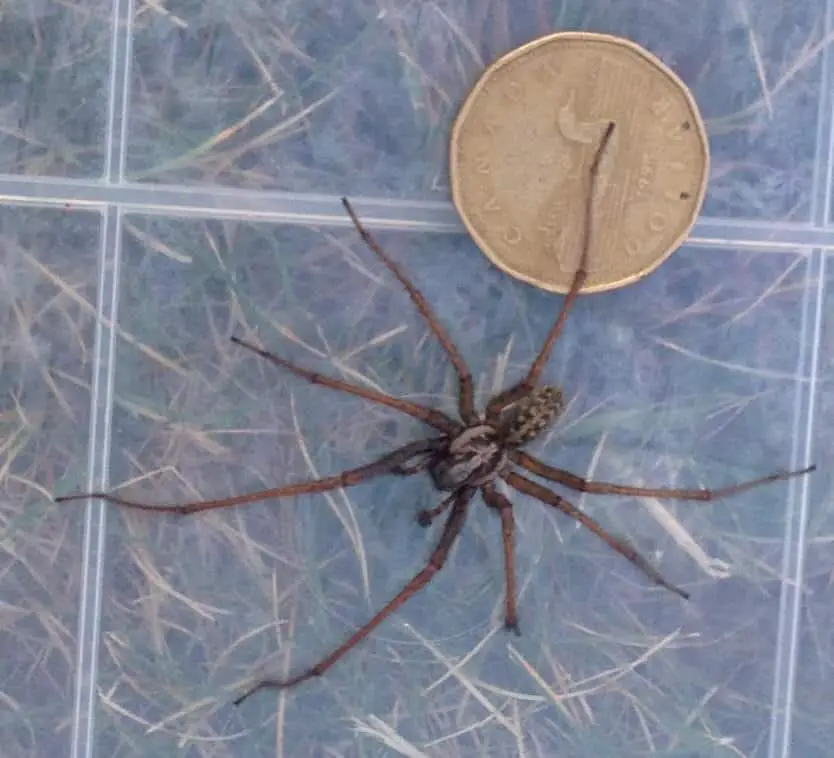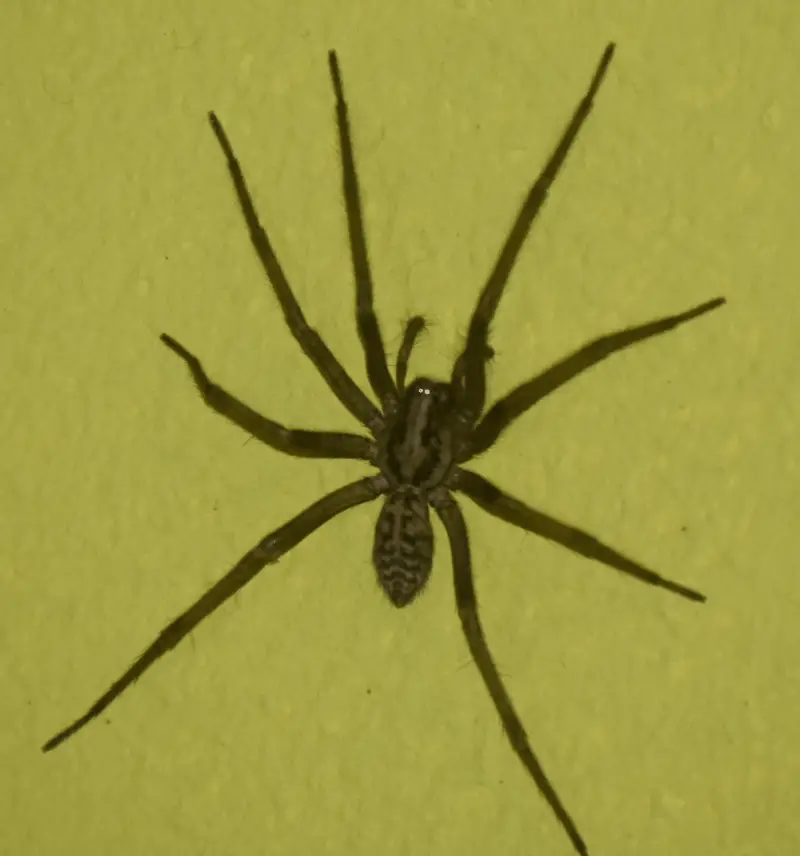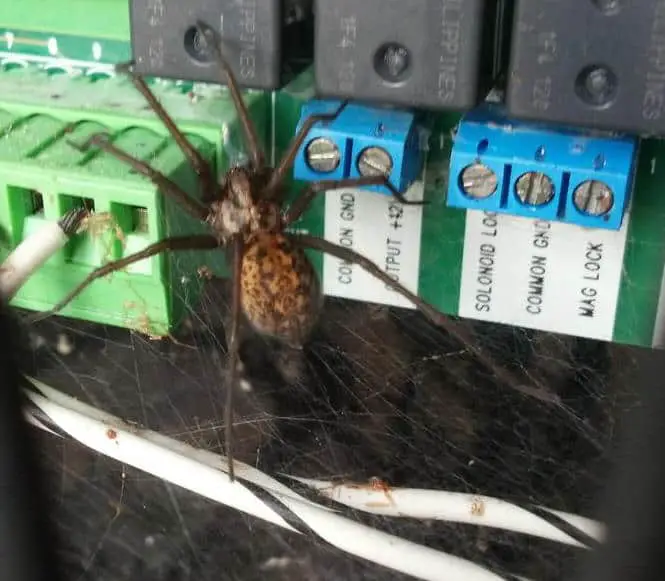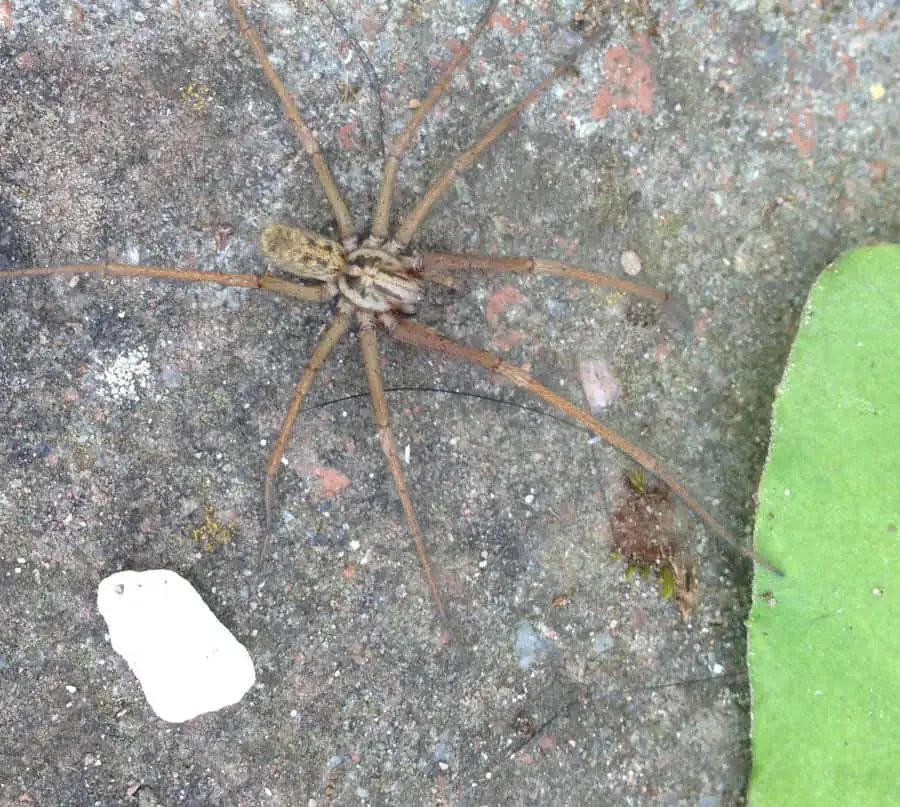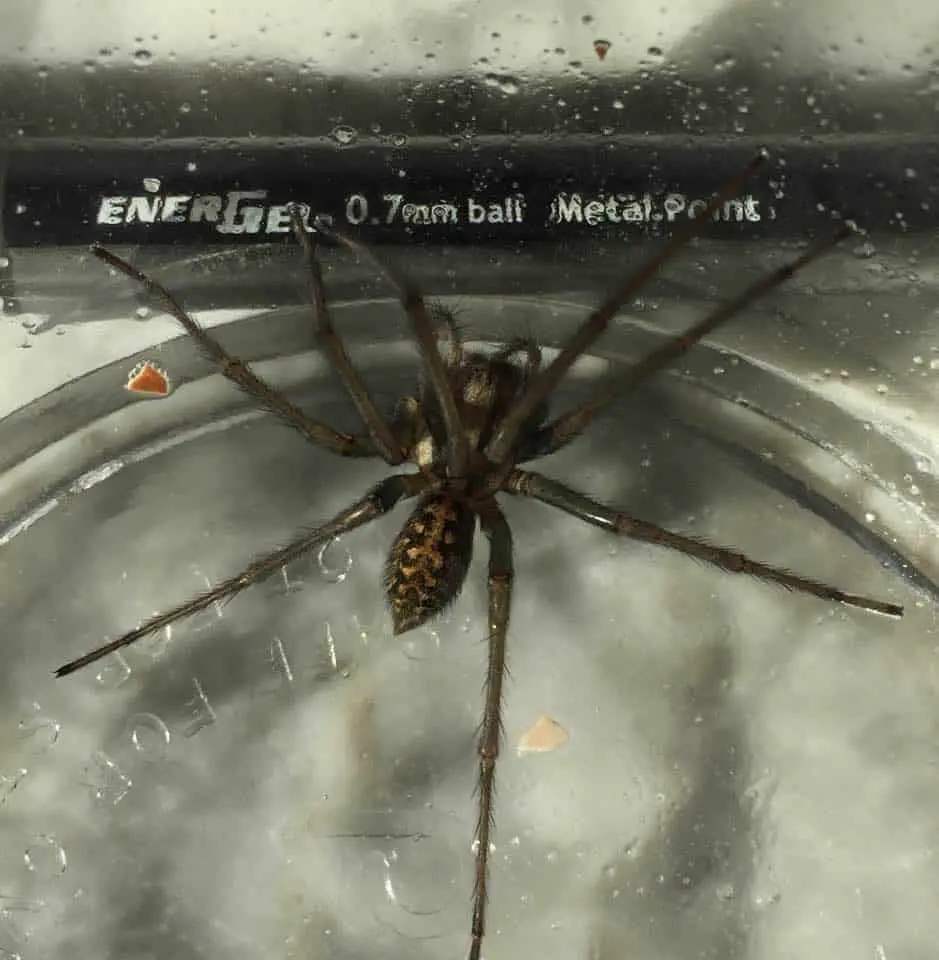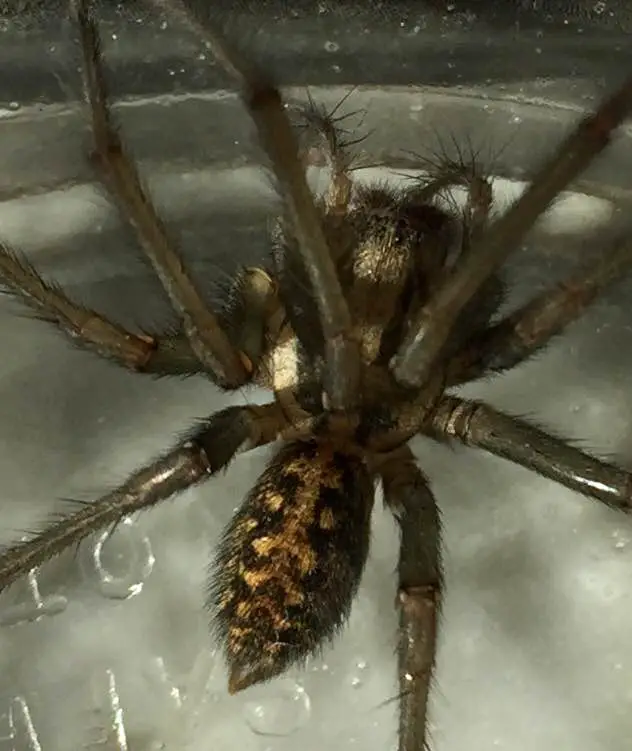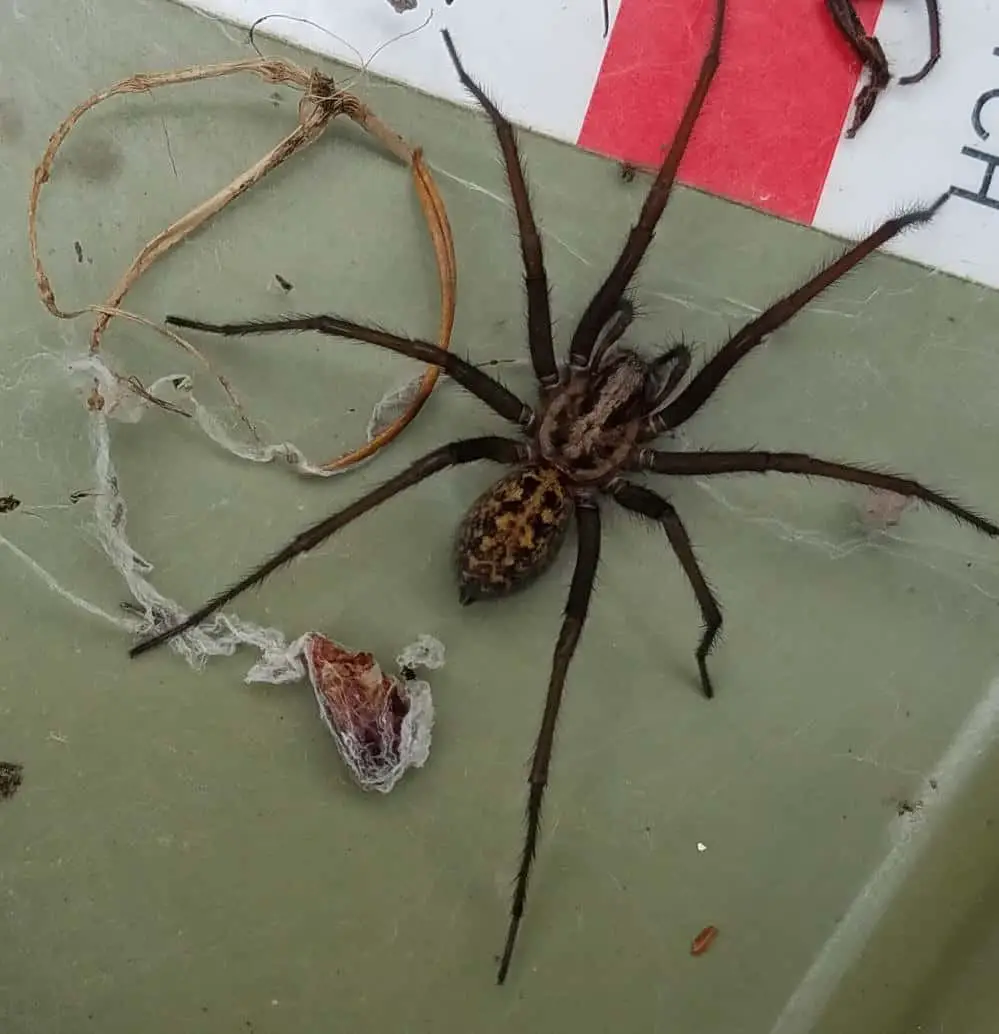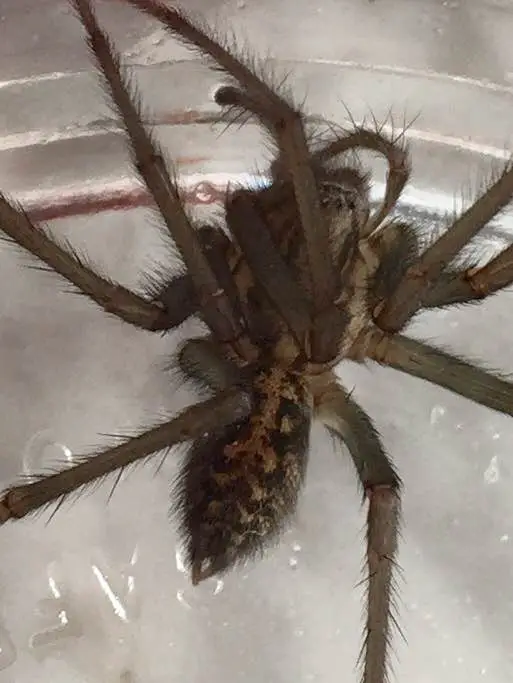Giant House Spider (Eratigena atrica). Tegenaria duellica/gigantea and T. saeva were synonymized with T. atrica and moved to the new genus Eratigena as of August, 2013. Eratigena is an anagram of the genus name Tegenaria (Bolzern et al. 2013). The specific epithet, atrica, is formed from atri- after the Latin noun for “atrium” with the addition of the -ica suffix meaning “belonging to” (often used when referring to habitats). So “belonging to the atrium” is a basic translation. This makes sense, as Koch mentions in his original (German) description of the species that he found it in a glass botanical house in Erlangen and that it also liked the warm spots on the interior of homes (Koch 1843). Notable Previous Names Previous names/synonyms of this species include Tegenaria gigantea, Tegenaria duellica, Tegenaria saeva, and Tegenaria atrica. The current name, Eratigena atrica, was published by Bolzern et al. 2013.
The Giant house spider is a close relative of both the Domestic house spider and the infamous Hobo spider. The bite of this species does not usually pose a threat to humans or pets. Females can reach 18 mm in length, with males having a slightly smaller body at around 12 mm to 15 mm in length. The female leg span is typically around 45 mm. The leg span of the male is highly variable, with spans between 25 mm to 75 mm being common.
The Giant house spider has the same colouration as the Domestic house spider; it has earthy tones of brown and muddy red or yellow. They also have conspicuously hairy legs and abdomen. The Giant house spider is indigenous to north western Europe. It was however unwittingly introduced to the Pacific Northwest of North America around 1900 due to human activity and strongly increased in numbers for the last decade. The webs built by the Giant house spider are flat and messy with a funnel at one end. The spider lurks in the funnel until a small invertebrate happens to get trapped in the web, at which point the spider runs out and attacks it. They usually build their webs in corners (on both the floor and ceiling), between boxes in basements, attics, or any other area that is rarely disturbed by large animals, or humans. Males can often be seen wandering around during the late summer and early autumn looking for a mate.
A population of Giant house spiders is popularly thought to be a deterrent to the establishment of Tegenaria agrestis, known in North America as the hobo spider, and considered by some to be more likely to bite humans. Giant house spiders may compete with hobo spiders for the same resources. Hobo spiders grow no more than a body size of 15 millimetres (0.59 in) long as where the larger female giant house spider can have a body size of 18 millimetres (0.71 in), but has proportionately much longer legs. All photos are copyright to their owners and may not be reproduced without permission.

